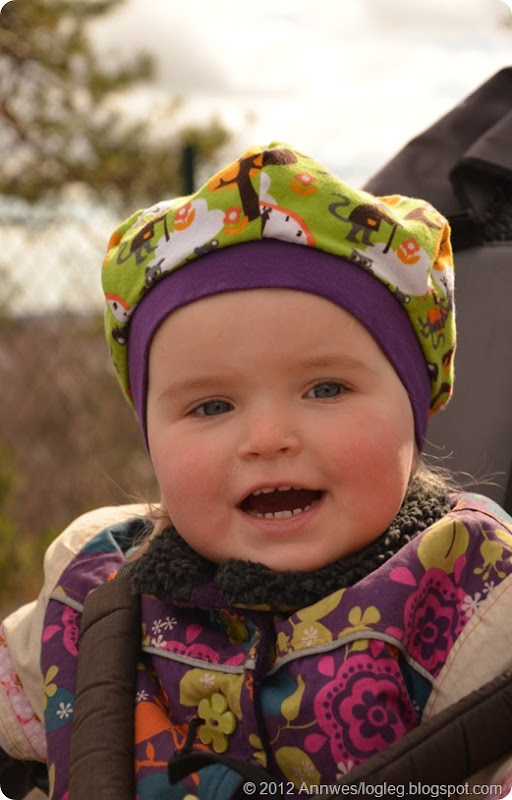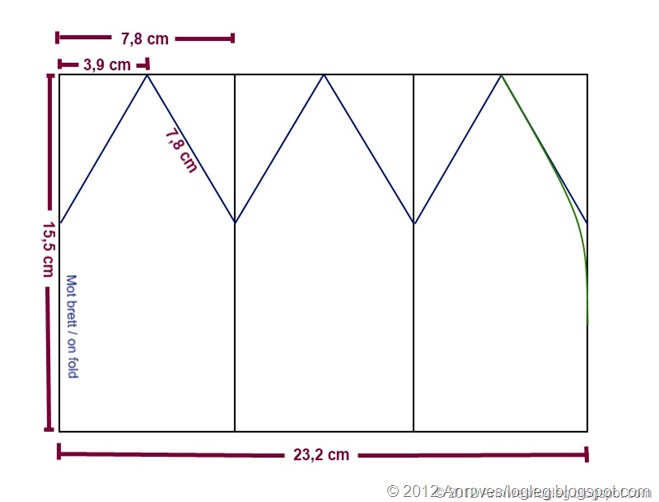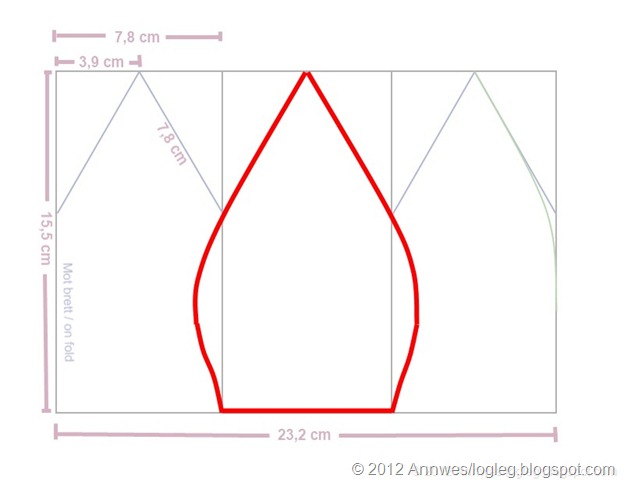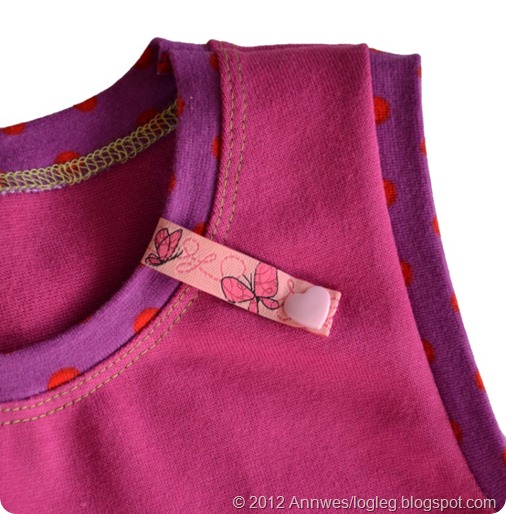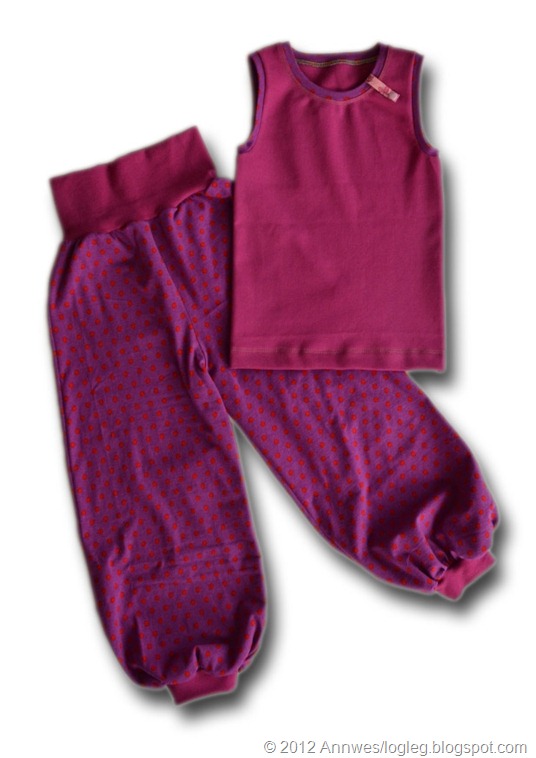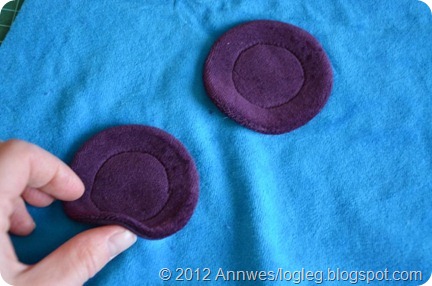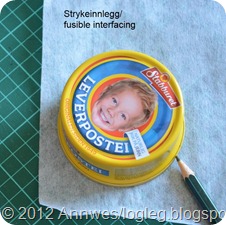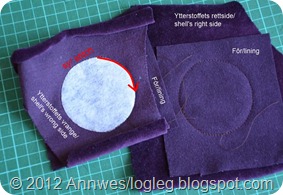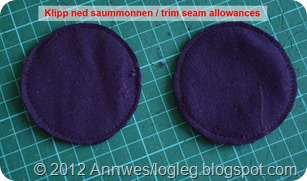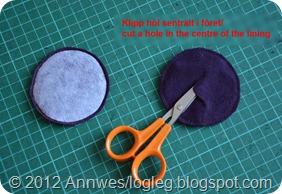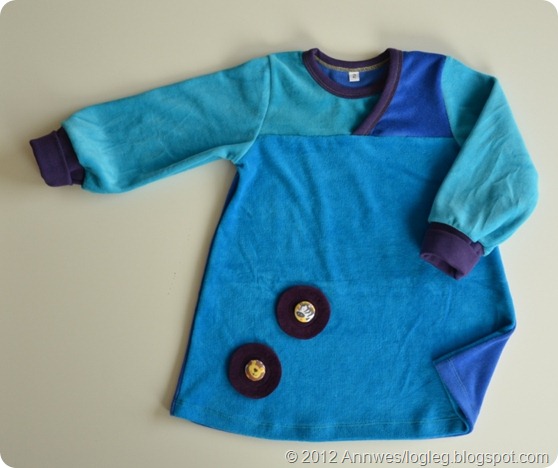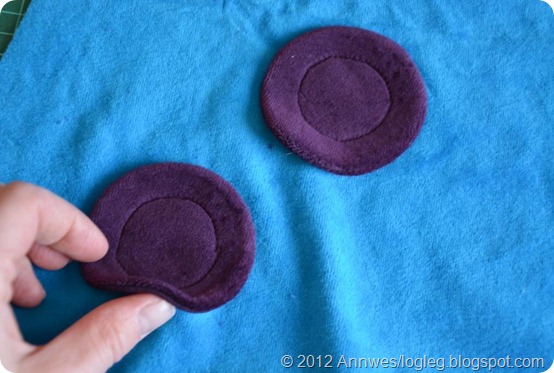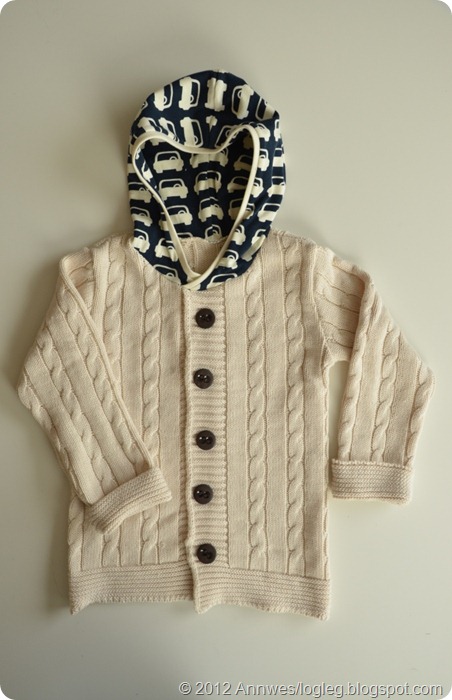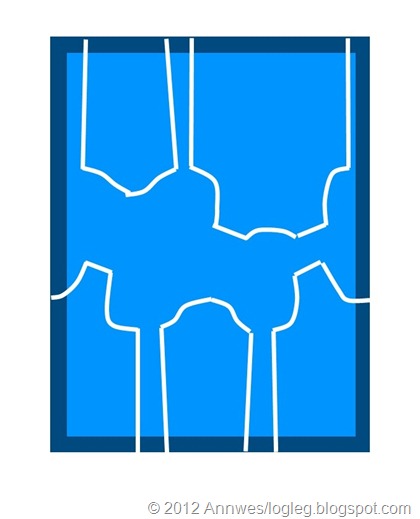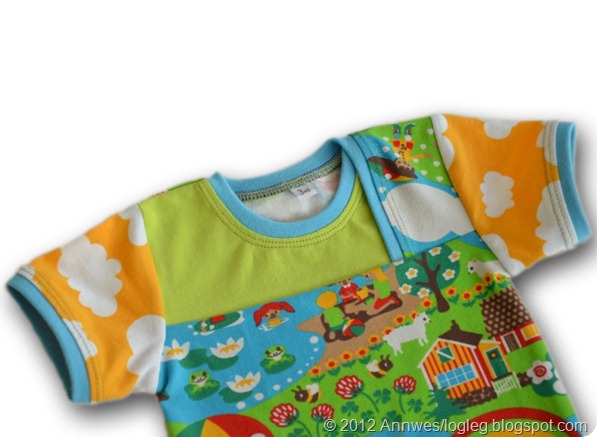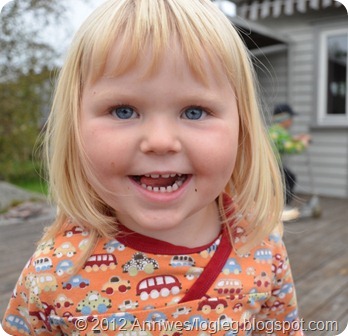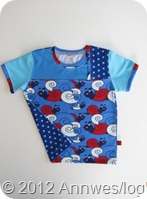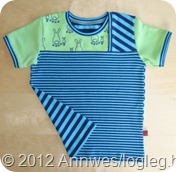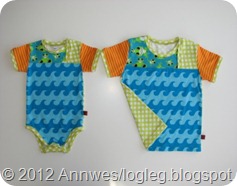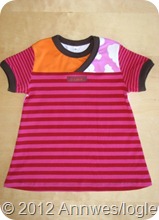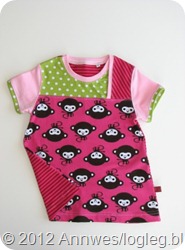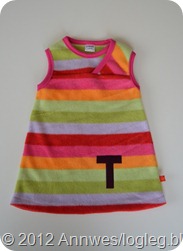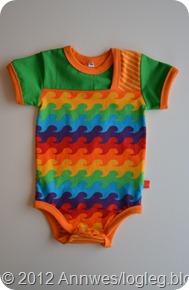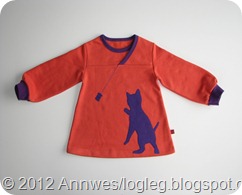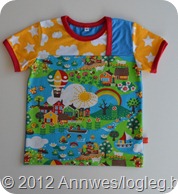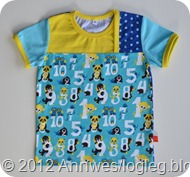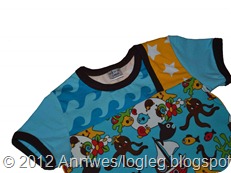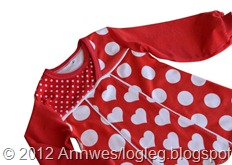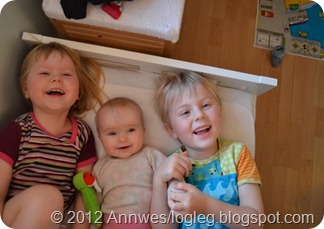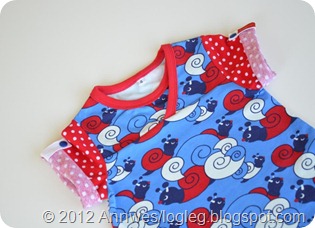Right now, I’m in Oslo on a business related travel, and yesterday I had a look at the house that soon is going to be our new home. As a bonus, there was a room in the basement that I think could be used as a sewing room, yippi!
Before I left for Oslo, I made a beanie for the youngest girl. Three, actually, but I have only got picture of her wearing the first one:
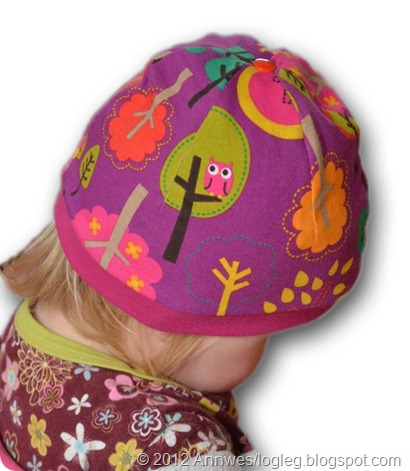
Besides the need of a new beanie/hat, I also took the opportunity to review my “baby hat tutorial” from last year. You can find the tut here: Baby hat tutorial.
Maybe it’s best to show the pattern first, well, a sketch of the pattern (you can not print this and get the actual pattern, the proportions are not right!)
Child’s head circumference 50 cm:

All measures are without seam allowances. I cut both shell and lining on fold from single jersey.
In addition, I cut rib band (from Stoff og Stil): 44,5 cm x 6 cm, included 1 cm seam allowances. (Makes a 2 cm wide finished rib band)
So, back to the beanie on the picture above: It fits very well, except for one thing; it has a little bit “conehead-shape”, and that’s because I let the overlocker cut a little bit too much in the curves:
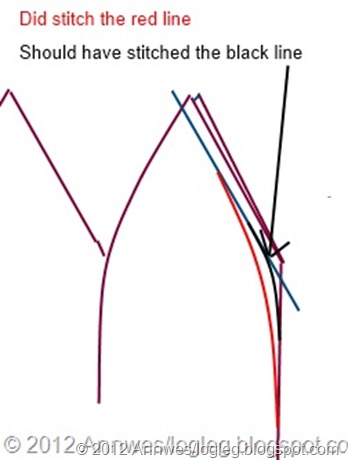
Here’s a photo that shows the shape. When it’s a little too narrow in the top, the hat tends to pull it self upwards.
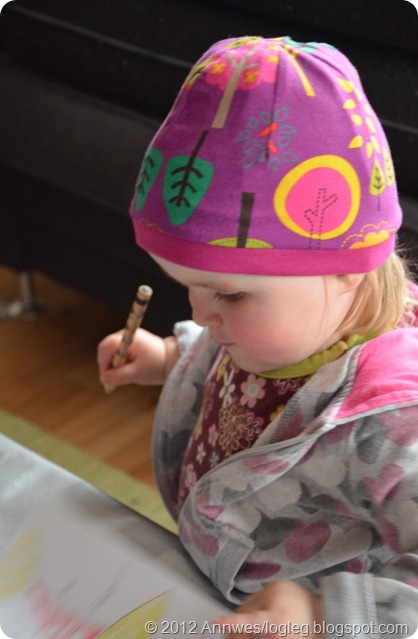
So I made one more, and this time it got a more rounded shape. The little girl was just about to fall asleep when it was finished, so I couldn’t bother her. And the next day, there was no time for photoshoot… So here the hats stands by themselves on the table:
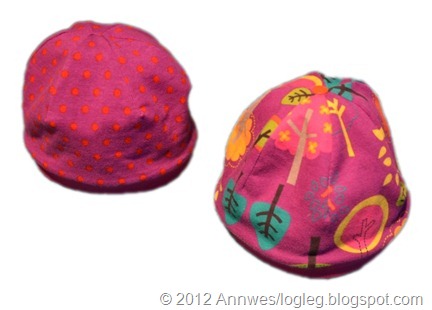
So what do I think about this design?
First: Next time I make a hat for the youngest girl, it will have a tie band/knyteband!
I like this design, but I’m afraid it’s not very flexible regarding size. When using a rib band as narrow as 2 cm, the rib band is situated below the widest part of the head, and therefore the rib band tends to pull the hat downwards. And that’s great! It prevents the hat from falling off. But, what if the hat is just a little bit too big? Then the rib band pulls the hat down into the eyes. At least that was the experience last year. So, basically it’s a great hat –when it fits.
So why don’t the regular beanies (dei vanlege luene) without rib, like the type Kokalal makes, fall down into the eyes? That’s because they are typically tightest around the widest part of the head, not below the widest part. Therefore, the beanie doesn’t need to have exact heigth to fit, and that makes it’s more flexible. That’s a major advantage if you sew for sale or for gifts and cannot try the beanie on!
But I have a plan for this model :-) Next beanie in this actually quite traditional design with six parts in the top will have a wider rib band, let’s say four cm wide instead of two.
Did I mention that I made three beanies a few days ago? The third one is based on this pattern, but is a kind of a baskerlue (don’t know the english name…). I haven’t tried it on yet, and am excited to see how (if) it works when I get home!
Fabrics in this post: Patterned jersey from Ixat, polka dot jersey from Textart.no. rib from Stoff og Stil. Byt he way, I placed a long prong KAM snap at the top to connect the shell and lining.
Just before I say goodnight: A last photo for Grandma and uncle Hallvard:



